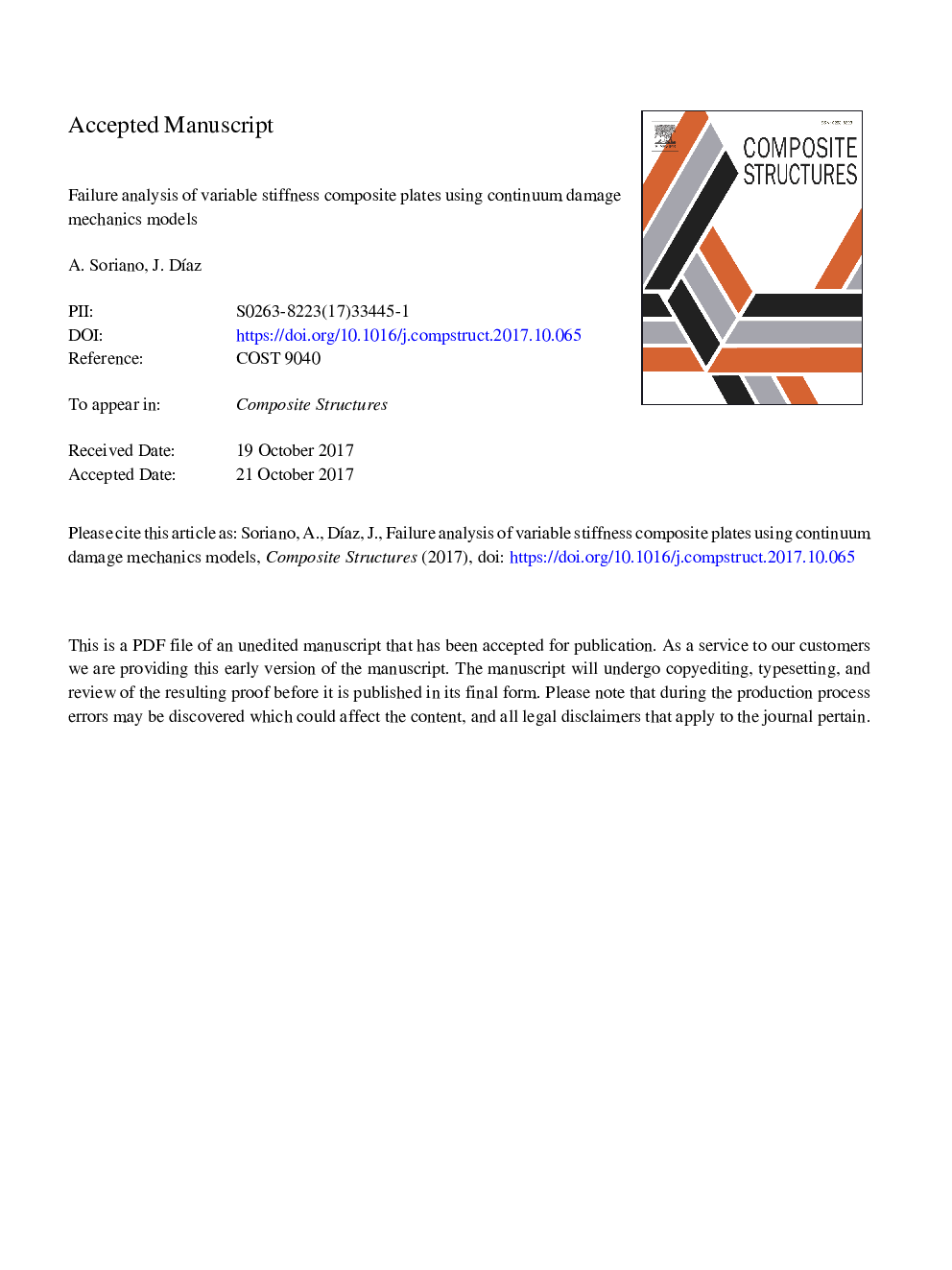| Article ID | Journal | Published Year | Pages | File Type |
|---|---|---|---|---|
| 6705041 | Composite Structures | 2018 | 28 Pages |
Abstract
Variable stiffness composites constitute a novel approach in the area of fibre-reinforced materials, where the unidirectionality of fibres is further utilized by following curved paths. However, their design and analysis pose a few challenges which have to be overcome for them to be widely used in industrial applications. One issue of particular importance is the uncertainty associated with the failure behaviour, since these laminates have a non-uniform in-plane stiffness distribution that might result in large in-plane stress gradients. These gradients, together with the existence of varying orientations within a ply, lead to the combination of longitudinal, transverse and shear stresses that may trigger different failure modes. This paper presents the analysis until failure of variable stiffness plates considering a continuum damage mechanics model. Finite element simulations are carried out on various stacking sequences where the mechanical behavior under high loading is investigated using three-dimensional elements. The response of non-conventional fibre orientations is compared with that of straight fibre laminates, while simulations both accounting and neglecting damage are also considered. The results show that the presence of damage remarkably affects the mechanical behavior of the simulated sequences, with increments in the obtained deflection between 40% and 65% as compared with undamaged models. Variations in the relative performance between non-conventional and traditional laminates were also observed in terms of the reported deflection and the damage onset load.
Keywords
Related Topics
Physical Sciences and Engineering
Engineering
Civil and Structural Engineering
Authors
A. Soriano, J. DÃaz,
